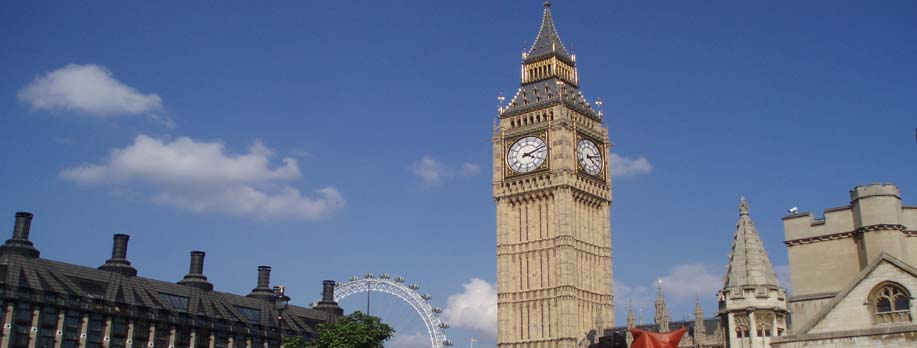|
With almost 377 bird species already spotted at Bharatpur, the place is certainly one of the most inviting bird sanctuaries in the world. You can easily spot between 50 to 100 species in a single day, and if your luck permits, you may even come across a Siberian crane in the winter. In fact, Bharatpur//’s primary claim to fame is that it is one of the only two known wintering haunts of the western race of the rare and graceful Siberian crane.
Of course, the birds you see will naturally depend on the habitat you are in—and Bharatpur has a variety. The marshy wetlands of the Hansarovar or Mansarovar or Ramband, for instance, are areas where the migratory waterfowl congregate in their thousands. Both the greylag and the bar-headed geese can be found here, often together. The former is somewhat dowdy in its pepper browns and has a pink bill and legs; the latter is smartly turned out in silver-grey, black and white, has an ochre bill and legs, as well as three charcoal //’caste//’ marks across its head. Ducks come in quite a selection: raffish, auburn-headed red-crested pochards wearing black polo necks and vermilion lipstick; more conservatively clad-white-eyed pochards in black Nehru jackets; beady-eyed shovellers (Anas clypeata) floating low and mean, cleaving the water with their patent-leather bills; common teals hiding behind silky green masks; pintails, in chocolate and silver, and mallards with thousand-carat emerald heads.
Of the resident ducks, the cotton teal float demurely around in their simple canvas-like outfits, while the mahogany and honey teals enliven the proceedings with lovely disyllabic whistles as they fly around in disorganized sorties.
Here too stride the waders—some tall enough to pace though the marshes, others light enough to tiptoe over the floating vegetation. The lovely Siberian cranes are of course, the cause celebre of this lot. Equally elegant are the stately grey sarus cranes, a pair often accompanied by a chick who keeps between its parents. There are spoonbills doing their minesweeping act, white ibis looking hunched and rather craven, cattle egrets that take off like blizzards, 250-strong; and everywhere, squeaking, scuttering sandpipers and redshanks, all so confusingly dappled and blotched as they explode from cover and zing away.
The splay-footed purple moorhen look like overweight matrons clad in purple silk, the elegant bronze-winged jacanas show off their metallic tints and the khaki white-tailed lapwings stand tall and upright on reedy yellow legs. A pair of black-necked storks may patrol the middle distances of the marshes, careful to keep apart and, suddenly, a large squadron of common cranes may appear overhead, calling evocatively as they circle and land.
And then, the dangerous shadow of the marsh harrier or fishing eagle passes over this contented congregation. There is a sudden heart-stopping roar of wings over water as some 5,000 ducks take to the sky in tumultuous take-off, the panic spreading though the marsh like a wildlife in a scrub jungle. The birds swarm and circle agitatedly and then sploosh down to a landing once more. You can easily spend the day at the edge of these marshes watching the goings on.
The trees (mainly acacias) that shroud the bunds you walk along also teem with birdlife. Small minivets, in lava, ash and charcoal flicker amidst the greenery, bejewelled kingfishers flash off their perches like short-circuits; red-breasted and grey-headed flycatchers regard you out of round, innocent eyes—the former brown with a flush of orange on its breast (only the male has this), the latter deadly in sulphur and gunpowder. The shrikes eye you suspiciously, their black eyes glittering behind their executioner masks. And a host of dapper wire-tailed swallows may keep you entranced as they dodge deftly between the trees in some hectic game of chase.
The sandy, stony tracts around Python Point, near the Hansarovar, may seem devoid of birdlife except for the odd disgruntled bulbul but the thickets here are the haunts of munias and warblers, and pipits and larks that saunter about on the sand.
The shady woodland areas where the peepuls and kadams soar high and wide, like the lovely stretch along the park//’s eastern boundary wall, are the haunts of shikras (sparrow hawks), tree-creepers, nuthatches and woodpeckers, to mention a few. Another marvelous spot is Kadam Kunj, where an ancient, crumbling hunting lodge squats, surrounded by a moat of black water and crowned by enormous peepul trees, from where the wheezy whistling of green pigeons is interspersed by the crashing, flapping sounds of clumsy nesting vultures.
And wherever you are, it pays to look carefully at the numerous dead trees that dot the landscape for they make favourite perches for many: majestic serpent eagle that use them as vantage points; owls that may peer out of the hollows, their eyes huge and golden; Stealth-bomber-like darters and witch-black cormorants holding their wings out to dry; herons waiting in ambush, and even amorous brahminy mynas! It is also sensible to look up every now and then and see what the sky has to offer.
Even the highly //’populated//’ areas of the park have their share of birds. At the site of the Keoladeo temple, for instance, white wagtails strut about pompous as landlords amongst the visitors; the blue-throats and redstarts are more circumspect. White-breasted water hens stride officiously from litter bin to litter bin and the jungle babbler will snatch the chips from your hands and then jeer at you rudely.
In this avian kingdom, mammals have also made their home to provide necessary ecological balance. The areas near the Forest Lodge and Forest Resthouse are favourite haunts of jackals and sounders of grunting wild boar. Spotted deer, sambar and nilgai splash about in the marshes, and if you are lucky you may catch a glimpse of that princeling amongst antelopes: the blackbuck. Less visible are fishing cats and monitors. If you are both very quiet and lucky, you may catch sight of the massive gleaming pythons, sunning themselves at Python Point beyond Keoladeo Temple: they are quick to glide underground though, and very sensitive to footfalls and voices. And if snakes are there, can the mongoose be far behind? Well, the nemesis mongoose is also seen here in quite an appreciable number.
|
|










